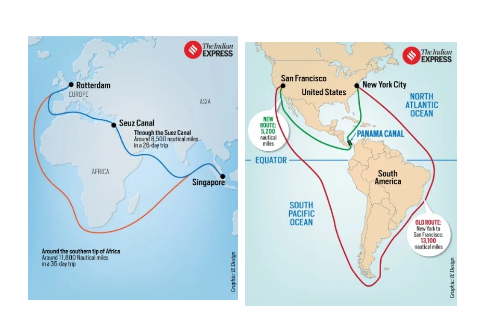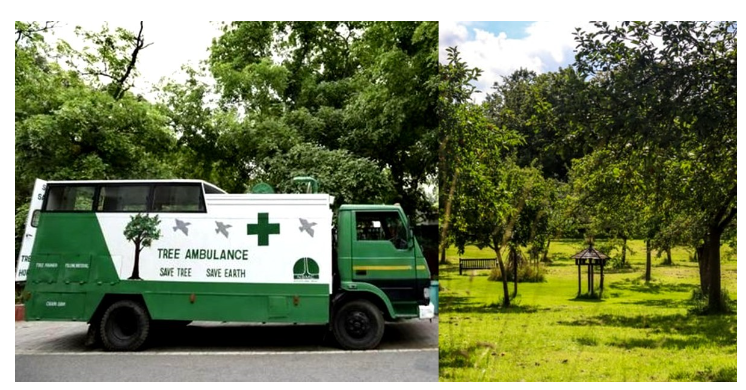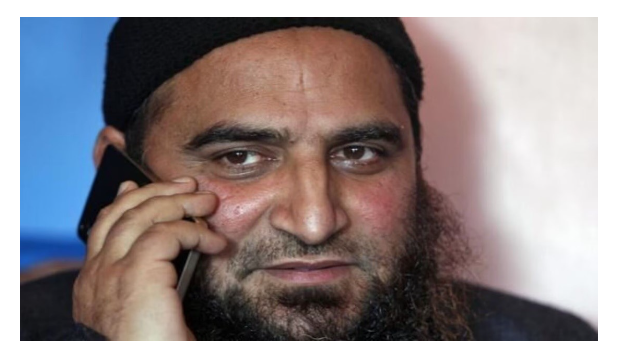Wednesday, 3rd January 2024
India-Italy Migration and Mobility Agreement
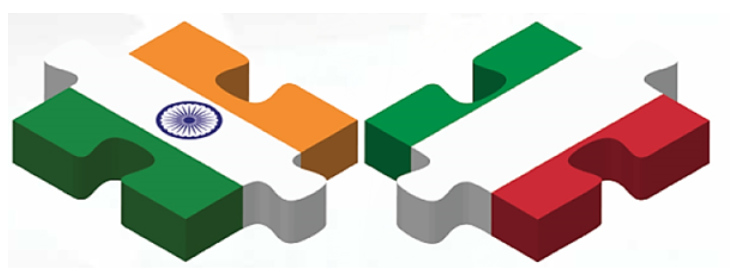
In News: The Union Cabinet has given retrospective approval to the Migration and Mobility Agreement between India and Italy.
Migration and Mobility Agreement between India and Italy
Overview
- The accord aims to enhance collaboration on addressing irregular migration and fostering people-to-people connections between India and Italy.
- It facilitates mobility for diverse groups such as students, skilled workers, business professionals, and young entrepreneurs, encouraging exchange and cooperation.
Key Provisions
- Temporary Residence for Indian Students
- Graduates seeking professional exposure in Italy after academic or vocational training can obtain temporary residency for a period of up to 12 months.
- Reserved Quotas for Workers
- The agreement delineates quotas for both non-seasonal and seasonal Indian workers, with a specified quota range for the years 2023-2025, as per the existing Flows Decree.
- The Italian government's annual "Flow Decree" (Decreto Flussi) determines the maximum number of non-EU citizens permitted to enter Italy for work and self-employment.
Implementation
The agreement is valid for 5 years, subject to automatic renewal unless terminated. A Joint Working Group (JWG) will oversee implementation, convening periodically to assess progress and propose supportive measures for effective execution.
Other Areas of Cooperation Between India and Italy
- Historical Ties
- India and Italy, both ancient civilizations, share historical connections.
- Italian port cities served as significant trading posts on the spice route.
- Marco Polo, the Venetian merchant, visited India in the 13th century during his travels to the east.
- Political
- Established in 1947, political relations between India and Italy were elevated to a Strategic Partnership in March 2023.
- Economic
- Bilateral trade between the two countries amounted to USD 14.25 billion in 2022-23. Italy stands among India's top 5 trading partners in the European Union.
- Key exports from India to Italy include ready-made garments, leather, iron ore, motor vehicles, textiles, chemicals, gems & jewelry. Import items from Italy comprise general and special-purpose machinery, machine tools, metallurgical products, and engineering items.
- Security
- The India-Italy Military Cooperation Group (MCG) serves as a forum to enhance defense cooperation between the two nations.
Other Initiatives Involving India and Italy
- India-Middle East-Europe Economic Corridor
- Global Biofuel Alliance
- Blue-Raman Project
Source: PIB
Viksit Bharat Sankalp Yatra Enrolls Recipients for PM-Kisan
In News: In recent times, the count of beneficiaries under the Pradhan Mantri Kisan Samman Nidhi (PM-Kisan) scheme has experienced a reduction of over 20%, dropping from its peak of 10.47 crore in April-July 2022 to 8.12 crore.
Vikasit Bharat Sankalp Yatra: A Nationwide Awareness Campaign
Overview
- Vikasit Bharat Sankalp Yatra is a countrywide initiative designed to enhance awareness through extensive outreach activities, striving for the comprehensive implementation of Government of India schemes across all Gram Panchayats, Nagar Panchayats, and Urban Local Bodies.
- This campaign adopts a holistic government approach, actively involving various Ministries/Departments of the Government of India, State Governments, Central Government Organizations, and Institutions.
Objectives
- Reaching the Eligible Vulnerable
- The campaign aims to connect with eligible individuals under various schemes who have not yet availed the benefits, ensuring comprehensive coverage.
- Information Dissemination and Awareness Generation
- Vikasit Bharat Sankalp Yatra focuses on spreading information and creating awareness about government schemes.
- Beneficiary Interaction through Personal Stories
- The campaign involves direct interaction with beneficiaries, sharing their personal stories and experiences related to government schemes.
- Enrollment of Potential Beneficiaries
- Through the Yatra, efforts are made to enroll potential beneficiaries by gathering relevant details.
Challenges of PM-Kisan
- Mandatory Provisions and Aadhaar Linkage
- The obligatory requirements for land seeding and Aadhaar linkage have introduced complexities, posing challenges for farmers in compliance.
- Technical difficulties may hinder farmers, especially in remote areas, from meeting these prerequisites.
- Awareness and Outreach
- Despite efforts, many eligible farmers remain uninformed about the PM-Kisan scheme, lacking sufficient information about the application process.
- Outreach initiatives may struggle to reach all segments of the farming community, particularly in remote or marginalized areas.
- Technology Accessibility
- Disparities in technology access, such as smartphones and internet connectivity, may impede farmers' engagement with the online processes required for PM-Kisan enrollment and compliance.
Way Forward
- Conduct a thorough review of mandatory land seeding provisions and Aadhaar linkage requirements for simplicity and efficiency.
- Leverage technology to create user-friendly platforms, ensuring seamless compliance.
- Establish community-level engagement programs to reach vulnerable farmers.
- Collaborate with local authorities, agricultural services, and NGOs to identify and support eligible farmers unaware of PM-Kisan benefits.
|
UPSC Previous Year Questions Prelims (2018) Q. Consider the following statements:
Which of the statements given above is/are correct? (a) 1 only Ans: (d) Exp:
|
Source: IE
Pegasus Spyware
In News: The return of Pegasus spyware sparks renewed fears over privacy and security.
Pegasus Spyware: An Invasive Surveillance Tool
Overview
- Pegasus spyware, created by the Israeli firm NSO Group, is a highly intrusive mobile surveillance tool designed to covertly infiltrate and monitor smartphones, extracting data from various apps and sources.
- Sold exclusively to government agencies for combating crime and terrorism, NSO asserts measures to avoid targeting non-criminal individuals, including journalists, lawyers, and human rights defenders.
Operating Procedure
- Pegasus utilizes "zero-click" methods for device infection, allowing installation without the owner's consent.
- Unlike regular apps requiring user confirmation, it exploits vulnerabilities in apps like WhatsApp or iMessage, triggering spyware installation without user interaction.
- Particularly adept at exploiting zero-day vulnerabilities, Pegasus targets undiscovered flaws in operating systems.
Targets
- Pegasus has been implicated in spying on journalists, human rights activists, lawyers, opposition leaders, and heads of state in various countries, including Saudi Arabia, Mexico, India, Morocco, Hungary, Azerbaijan, and Rwanda.
Implications
- The spyware jeopardizes privacy and security for those exposing corruption, defending human rights, and advocating democracy.
- It undermines press freedom by compromising journalists' independence and revealing their sources and methods.
- Pegasus poses a threat to national sovereignty by enabling foreign interference and espionage in internal affairs.
Challenges
- Difficult to detect and remove, Pegasus conceals its presence and can self-destruct if under scrutiny.
- Legal grey areas complicate regulation, with NSO Group and its clients often evading responsibility for misuse.
Related Cybersecurity Initiatives
- India
- Information Technology Act, 2000.
- National Cyber Security Strategy.
- Cyber Surakshit Bharat.
- Computer Emergency Response Team - India (CERT-In).
- Critical Information Infrastructure.
- Indian Cyber Crime Coordination Centre (I4C).
- International Mechanisms
- International Telecommunication Union (ITU).
- Budapest Convention on Cybercrime.
Way Forward
- International Oversight Mechanism
- Establish global oversight to hold companies accountable for unethical surveillance tool use and facilitate independent audits.
- Legal Framework Strengthening
- Strengthen national and international legal frameworks explicitly addressing spyware use, protecting privacy and human rights.
- Public Awareness Campaigns
- Conduct public awareness initiatives to educate individuals on spyware risks and safeguarding devices against infiltration.
- Cybersecurity Infrastructure Strengthening
- Enhance national cybersecurity infrastructure for proactive threat detection and neutralization, including continuous monitoring for potential spyware activities.
- Tech Company Ethical Guidelines
- Encourage tech companies to adopt ethical guidelines aligned with human rights principles, promoting responsible corporate behavior.
|
UPSC Previous Year Questions Prelims (2018) Q. The terms ‘WannaCry, Petya and EternalBlue’ sometimes mentioned in the news recently are related to (a) Exoplanets Ans: (c) Prelims (2020) Q. In India, under cyber insurance for individuals, which of the following benefits are generally covered, in addition to payment for the loss of funds and other benefits?
Select the correct answer using the code given below: (a) 1, 2 and 4 only Ans: (b) Prelims (2017) Q. In India, it is legally mandatory for which of the following to report on cyber security incidents?
Select the correct answer using the code given below: (a) 1 only Ans: (d) Mains (2022) Q. What are the different elements of cyber security? Keeping in view the challenges in cyber security, examine the extent to which India has successfully developed a comprehensive National Cyber Security Strategy. |
Source: TH
X-ray Polarimeter Satellite: ISRO
In News: ISRO has recently launched its inaugural X-ray Polarimeter Satellite (XpoSat) to explore X-ray polarization and study cosmic sources such as Black holes, Neutron stars, and Magnetars.
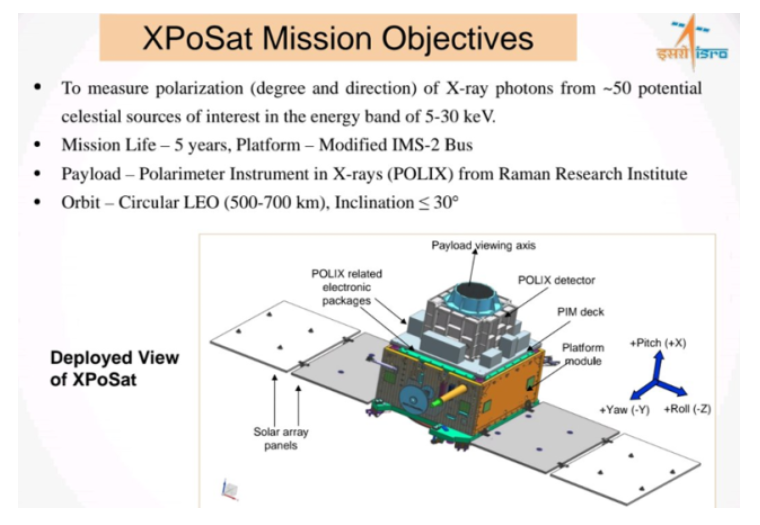
X-ray Polarimeter Satellite (XPoSat): Unlocking Celestial Mysteries
- Purpose
- XPoSat is crafted to delve into X-ray polarization within the medium X-ray band, unraveling the radiation mechanisms and geometry of celestial sources like Black holes, Neutron stars, and Magnetars.
- This exploration is pivotal for advancing our understanding of the physics governing these cosmic entities.
- Payloads
- The satellite features two primary payloads: POLIX (Polarimeter Instrument in X-rays) and XSPECT (X-ray Spectroscopy and Timing).
- POLIX observes approximately 40 bright astronomical sources, while XSPECT studies the electromagnetic spectrum emitted by diverse matter.
- Development
- Entirely constructed by two Bengaluru-based institutions—the UR Rao Satellite Centre and Raman Research Institute—XPoSat's development commenced in 2008, formalizing an agreement with ISRO in 2015.
- Global Context
- XPoSat stands as the world's second mission dedicated to X-ray polarization in the medium X-ray band, following NASA's Imaging X-ray Polarimetry Explorer (IXPE), launched in 2021.
- National Contribution
- As India's third space-based observatory, XPoSat follows the solar mission Aditya-L1 and the 2015-launched AstroSat.
- Its launch marks a significant advancement in Indian astronomy and space research.
X-rays and Celestial Object Study
- X-ray Basics
- X-rays are a form of electromagnetic radiation with wavelengths ranging from 0.01 to 10 nanometres.
- They exhibit perpendicular vibrations of electric and magnetic fields.
- Polarization Significance
- Electromagnetic radiation polarization refers to the orientation of these fields as radiation traverses space.
- X-rays can become polarized when scattered or when generated by the deflection of a fast-moving charged particle in a magnetic field.
- Measuring Polarization
- Instruments like POLIX facilitate the measurement of X-ray polarization.
- This capability empowers astronomers to discern the orientation and strength of magnetic fields in celestial objects.
- Such insights are invaluable for understanding the nature and behavior of pulsars, regions around black holes, and other cosmic phenomena emitting X-rays.
Source: IE
Huntington's Disease
In News: A recent study published in Scientific Reports by researchers from the University of Szeged in Hungary has revealed novel insights into Huntington's disease.

Huntington's Disease: Unveiling Insights through Fruit Fly Model
- About
- Huntington's disease is a severe neurodegenerative disorder impacting the central nervous system, stemming from a mutation in the HTT gene, leading to the production of a faulty huntingtin (Htt) protein. Mutant Htt proteins disrupt cellular processes when cleaved into toxic fragments.
- HTT Gene and Polyglutamine Tract
- The HTT gene codes for the crucial huntingtin protein in nerve cell functioning.
- Mutations cause an expanded polyglutamine tract in the Htt protein, resulting in misfolding and dysfunction.
- The severity correlates with the tract length. Inherited in an autosomal dominant manner, each child of an affected parent has a 50% chance of inheriting the mutation.
- Symptoms
- Initial symptoms include forgetfulness, balance loss, and clumsiness.
- Progressing over time, symptoms impact mood, reasoning, and lead to uncontrollable movements, difficulty in speech, swallowing, and walking.
- Treatment
- No cure exists; available treatments only alleviate symptoms.
Key Highlights of the Study
- Model Organism
- Fruit flies were genetically modified to express the polyglutamine tract of a mutated human HTT gene in their nervous system.
- The Gal4/UAS system, utilizing a yeast gene (Gal4), enabled specific protein expression in neurons.
- Results
- Fruit flies with the mutated HTT gene exhibited neurodegeneration, impaired climbing, and reduced viability.
- A control group with a normal glutamine range showed minimal effects.
- Expressing a longer glutamine tract mirrored human Huntington’s disease symptoms, while a shorter tract did not.
- Gene Yod1's Impact
- Among 32 investigated genes, overexpressing the Yod1 gene effectively eliminated disease-like effects in fruit flies, including neurodegeneration and motor impairments associated with Huntington's disease.
Source: TH
Samvid Gurukulam Girls Sainik School
In News: The Defence Minister of India recently inaugurated the Samvid Gurukulam Girls Sainik School in Vrindavan, Uttar Pradesh.
About the Initiative
- This notable development underscores the government's dedication to ensuring gender parity in defense opportunities for girls.
- The strategically located school serves as a crucial component in advancing the government's ambitious plan to establish 100 new Sainik Schools nationwide, aligning with the goals set forth in the National Education Policy 2020.
- The initiative seeks to deliver quality education, enhance career prospects, and inspire girls to actively participate in the Armed Forces.
Source: TH
Bubble Baby Syndrome
In News: Recently in Mumbai, a two-month-old girl diagnosed with bubble baby syndrome underwent a bone marrow transplant (BMT).

About Severe Combined Immunodeficiency (SCID), or Bubble Baby Syndrome
- Severe Combined Immunodeficiency (SCID), colloquially known as "bubble baby syndrome," is an exceedingly rare genetic disorder that poses life-threatening challenges to the immune system.
- Classified as a form of primary immune deficiency, the condition earned its colloquial name because exposure to a regular environment can be fatal for affected children.
Mechanism of SCID
- During fetal development, the immune system originates in the bone marrow, where stem cells have the potential to differentiate into three types of blood cells: red blood cells, white blood cells (WBCs), and platelets.
- WBCs, particularly lymphocytes (comprising B-cells and T-cells), play a crucial role in defending the body against infections.
- In SCID, a "combined" immunodeficiency occurs as both B-cells and T-cells are affected.
- The child's body either lacks a sufficient number of lymphocytes or possesses dysfunctional ones.
- This compromised immune system struggles to combat infections caused by viruses, bacteria, and fungi.
Causes
SCID is primarily caused by inherited mutations in multiple genes, meaning the condition is passed down from one or both birth parents to the child.
Symptoms
Although babies with SCID may appear healthy at birth, issues such as failure to thrive, chronic diarrhea, recurrent respiratory infections, oral thrush, and other serious, challenging-to-treat infections may manifest soon after.
Treatment
- SCID is considered a pediatric emergency, as untreated infants are unlikely to survive beyond their first year.
- The most common treatment involves a stem cell transplant, also known as a bone marrow transplant, wherein the child receives stem cells from a donor with the hope of rebuilding the compromised immune system.
Source: DH
Exercise 'Desert Cyclone 2024'
In News: The India-UAE Joint Military Exercise 'Desert Cyclone 2024' is scheduled to take place in Rajasthan from January 2 to January 15.
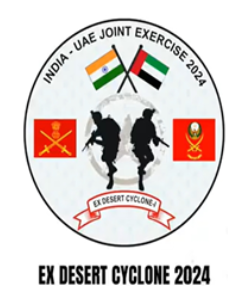
About Exercise 'Desert Cyclone 2024'
- Inaugural Joint Military Exercise
- The inaugural edition of the joint military exercise, "Desert Cyclone 2024," marks a significant collaboration between India and the United Arab Emirates (UAE).
- This exercise aims to enhance interoperability by facilitating the exchange of best practices in Urban Operations.
- Strategic Partnership Milestone
- The exercise signifies a notable milestone in the strategic partnership between India and the UAE, fostering stronger ties through collaborative military training.
Key Facts about India-UAE Relations
- Diplomatic Relations
- India and the UAE established diplomatic relations in 1972.
- The UAE opened its Embassy in Delhi in 1972, and India reciprocated by opening its Embassy in Abu Dhabi in 1973.
- Previous Collaborations
- The first-ever India-UAE Joint Air Forces exercise occurred in September 2008 at the Al-Dhafra base in Abu Dhabi.
- India has been a regular participant in the biennial International Defence Exhibition (IDEX) in Abu Dhabi, showcasing its defense capabilities.
- Bilateral Naval Exercise
- Earlier this year, INS Visakhapatnam and INS Trikand, two ships of the Indian Navy, participated in the bilateral exercise 'Zayed Talwar' with the UAE. This naval exercise aimed to enhance interoperability and synergy between the two navies, fostering maritime collaboration.
These engagements highlight the diverse spectrum of collaborations between India and the UAE in the defense and strategic realms.
Source: AIR
Cigaritis meghamalaiensis
In News: The pristine hills of Meghamalai in Tamil Nadu have revealed a newfound species of 'silverline' butterflies.
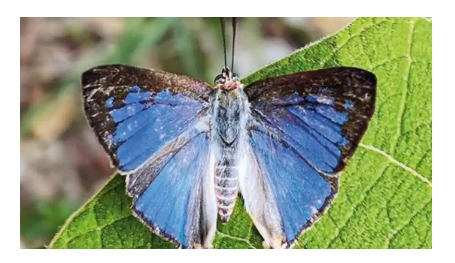
About Cigaritis meghamalaiensis
- Cigaritis meghamalaiensis - A New Butterfly Species
- Discovered in the high elevations of Periyar in Idukki in 2018, Cigaritis meghamalaiensis is a newly described species of butterfly.
- Notably, it has become the first butterfly species to be officially documented from the Western Ghats in the past 33 years.
- Habitat and Distribution
- Further explorations have revealed that this distinct species is confined to the Meghamalais and the adjoining Periyar Tiger Reserve in Tamil Nadu.
- Appearance and Unique Features
- The adult butterfly showcases a distinctive feature where the discal and post-discal bands on the forewing underside are conjoined and lie parallel from their origin at the costa.
- This unique characteristic sets the new species apart from all other Cigaritis species found in Peninsular India and Sri Lanka.
- Western Ghats Cigaritis Species
- Within the Western Ghats, there are seven known species of Cigaritis, namely C. vulcanus, C. schistacea, C. ictis, C. elima elima, C. lohita lazularia, C. lilacinus, and C. abnormis. Notably, all these species, except C. lilacinus, have been reported from the southern Western Ghats.
This discovery contributes to the understanding of the rich biodiversity of the Western Ghats, highlighting the significance of Meghamalai and the Periyar Tiger Reserve in hosting this newly identified butterfly species.
Source: TH
Radiocarbon Dating - Edukemy Current Affairs
In News: The advent of radiocarbon dating introduced the first verifiable method for various scientific disciplines, significantly transforming them and impacting our world.
About Radiocarbon Dating
- Dating Methodology
- Dating serves as a method to determine the age of an object, and radiocarbon dating is a specific technique employing carbon-14 isotopes for this purpose.
- Formation of Carbon-14
- Carbon-14, the isotope crucial to radiocarbon dating, is formed in the Earth's atmosphere through interactions with cosmic rays.
- These energetic streams of charged particles from outer space collide with atmospheric atoms, releasing neutrons.
- Creation Process
- When these neutrons interact with the nitrogen-14 isotope, carbon-14 is produced.
- Given the constant influx of cosmic rays through the Earth's atmosphere, carbon-14 is continually generated.
- Integration into Biospheres
- Carbon-14, in the form of radioactive carbon dioxide, readily combines with atmospheric oxygen.
- This compound then becomes part of the carbon cycle, entering the bodies of plants through photosynthesis.
- Subsequently, animals acquire carbon-14 when they consume plants, and the isotope circulates within various ecosystems.
- Diffusion into Ecosystems
- For radiocarbon dating to be effective, carbon-14 must be able to diffuse into Earth's diverse ecosystems.
- This ensures that the concentration of carbon-14 in the atmosphere remains comparable to its concentration in the planet's other biospheres.
- The continuous interchange of carbon-14 through the carbon cycle maintains its presence in living organisms and forms the basis for accurate dating methodologies.
Source: TH
Finance Commission's Role in Addressing State Fiscal Challenges
In News: A recent article suggests that the 16th Finance Commission of India ought to prioritize fiscal efficiency and discipline in its devolution formula, aiming to restrain the populist inclinations of state governments.
Addressing the Need to Curb Populism in India
- Fiscal Imbalance
- Rising Debt
- From 2014 to 2022, states like Andhra Pradesh and Tamil Nadu witnessed a surge in the average debt-to-GDP ratio, reaching 34.5%.
- Higher Deficit
- Populist spending on free electricity, loan waivers, and social welfare schemes led to a combined fiscal deficit of 4.1% of GDP in 2021-22.
- Revenue Shortfalls
- Tax revenues lagged behind populist spending, requiring states to rely heavily on central government bailouts or borrowing.
- Rising Debt
- Economic Distortions
- Investment Decline
- Populist policies, such as price controls, contributed to a 10% decline in Foreign Direct Investment (FDI) in 2022.
- Job Growth Stagnation
- Despite increased government spending, the unemployment rate remained above 7% in 2023.
- Market Inefficiency
- Price controls in sectors like agriculture disrupted supply chains and impacted consumer welfare.
- Investment Decline
- Erosion of Governance
- Increase in Corruption
- Populist rhetoric correlated with a drop in India's Transparency International Corruption Perception Index ranking from 80 in 2014 to 85 in 2022.
- Declining Transparency
- States with strong populist leaders showed a downward trend in transparency, as indicated by the Public Affairs Index.
- Increase in Corruption
Populist Policies Aggravating the Debate
- Reversion to Old Pension Scheme (OPS)
- Some states reverted to OPS, incurring indefinite liabilities toward employee pensions, compared to the limited liability of the New Pension Scheme (NPS) introduced in 2004.
- An RBI study suggests OPS results in 4.5 times more liability by 2060, restricting growth and compromising future generations' interests.
- Rising States’ Fiscal Deficit
- States' deficits increased due to subsidies for populist measures like free electricity, with an average spending on subsidies at 0.87% of Gross State Domestic Product (GSDP).
Finance Commission's Role in Curbing Populism
- Performance-Based Incentives
- The 15th Finance Commission proposed measurable incentives linked to specific outcomes, encouraging responsible governance and discouraging populist measures.
- Article 280(3) allows the Finance Commission to address issues in the interest of sound finance.
- Objective Criteria for Populist Measures
- The Finance Commission can work on developing objective criteria for categorizing populist and non-populist measures, considering diverse developmental needs.
- Fiscal Efficiency Parameters
- The Finance Commission can give more weight to fiscal efficiency in its transfer criteria, emphasizing fiscal consolidation and tax effort.
- Public Awareness
- By creating public awareness about the consequences of populist measures, the Finance Commission can contribute to informed public discourse and pressure political parties to adopt responsible fiscal policies.
- Stress on Future Implications
- The Finance Commission can highlight the long-term consequences of populist measures, recommending measures to prevent states from borrowing beyond their capacity.
- Consensus Building
- Acting as a mediator, the Finance Commission can foster dialogue between the Centre and States, promoting cooperative federalism in fiscal matters.
- Regular Review and Recommendations
- The Finance Commission can continually review the financial health of states, making periodic recommendations based on evolving economic scenarios.
Conclusion
A collaborative approach between the Centre and States, guided by the Finance Commission, is crucial to addressing the challenges posed by populist policies and ensuring responsible fiscal governance.
|
UPSC Previous Year Questions Prelims (2010) Q. Consider the following actions by the Government:
which of the above actions can be considered a part of the “fiscal stimulus” package? (a) 1 and 2 only Ans: (a) Mains (2015) Q. In what way could the replacement of price subsidy with direct benefit Transfer (DBT) change the scenario of subsidies in India? Discuss. |
Source: BL
Share the article
Edukemy’s Current Affairs Quiz is published with multiple choice questions for UPSC exams
MCQ
Get Latest Updates on Offers, Event dates, and free Mentorship sessions.

Get in touch with our Expert Academic Counsellors 👋
FAQs
UPSC Daily Current Affairs focuses on learning current events on a daily basis. An aspirant needs to study regular and updated information about current events, news, and relevant topics that are important for UPSC aspirants. It covers national and international affairs, government policies, socio-economic issues, science and technology advancements, and more.
UPSC Daily Current Affairs provides aspirants with a concise and comprehensive overview of the latest happenings and developments across various fields. It helps aspirants stay updated with current affairs and provides them with valuable insights and analysis, which are essential for answering questions in the UPSC examinations. It enhances their knowledge, analytical skills, and ability to connect current affairs with the UPSC syllabus.
UPSC Daily Current Affairs covers a wide range of topics, including politics, economics, science and technology, environment, social issues, governance, international relations, and more. It offers news summaries, in-depth analyses, editorials, opinion pieces, and relevant study materials. It also provides practice questions and quizzes to help aspirants test their understanding of current affairs.
Edukemy's UPSC Daily Current Affairs can be accessed through:
- UPSC Daily Current Affairs can be accessed through Current Affairs tab at the top of the Main Page of Edukemy.
- Edukemy Mobile app: The Daily Current Affairs can also be access through Edukemy Mobile App.
- Social media: Follow Edukemy’s official social media accounts or pages that provide UPSC Daily Current Affairs updates, including Facebook, Twitter, or Telegram channels.

